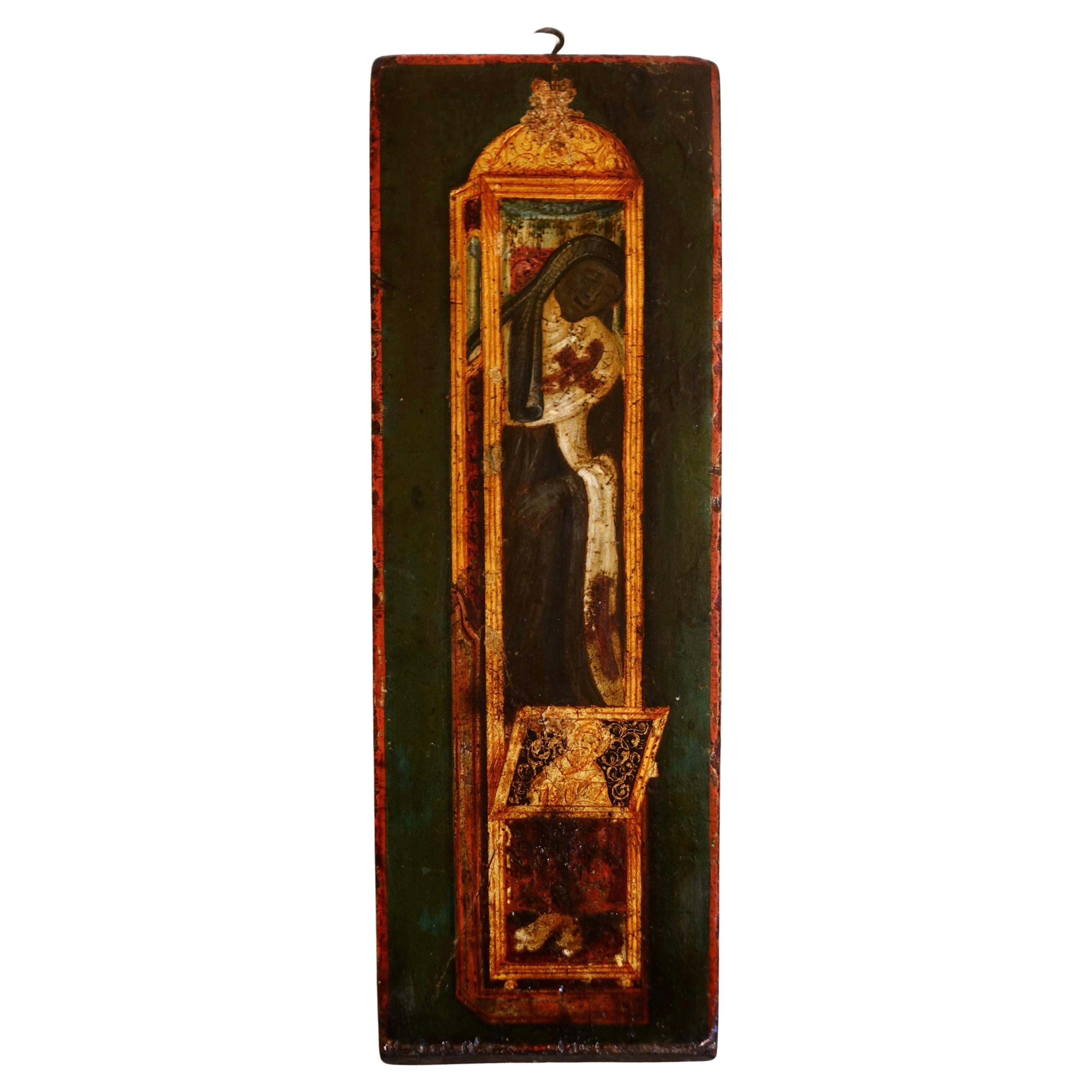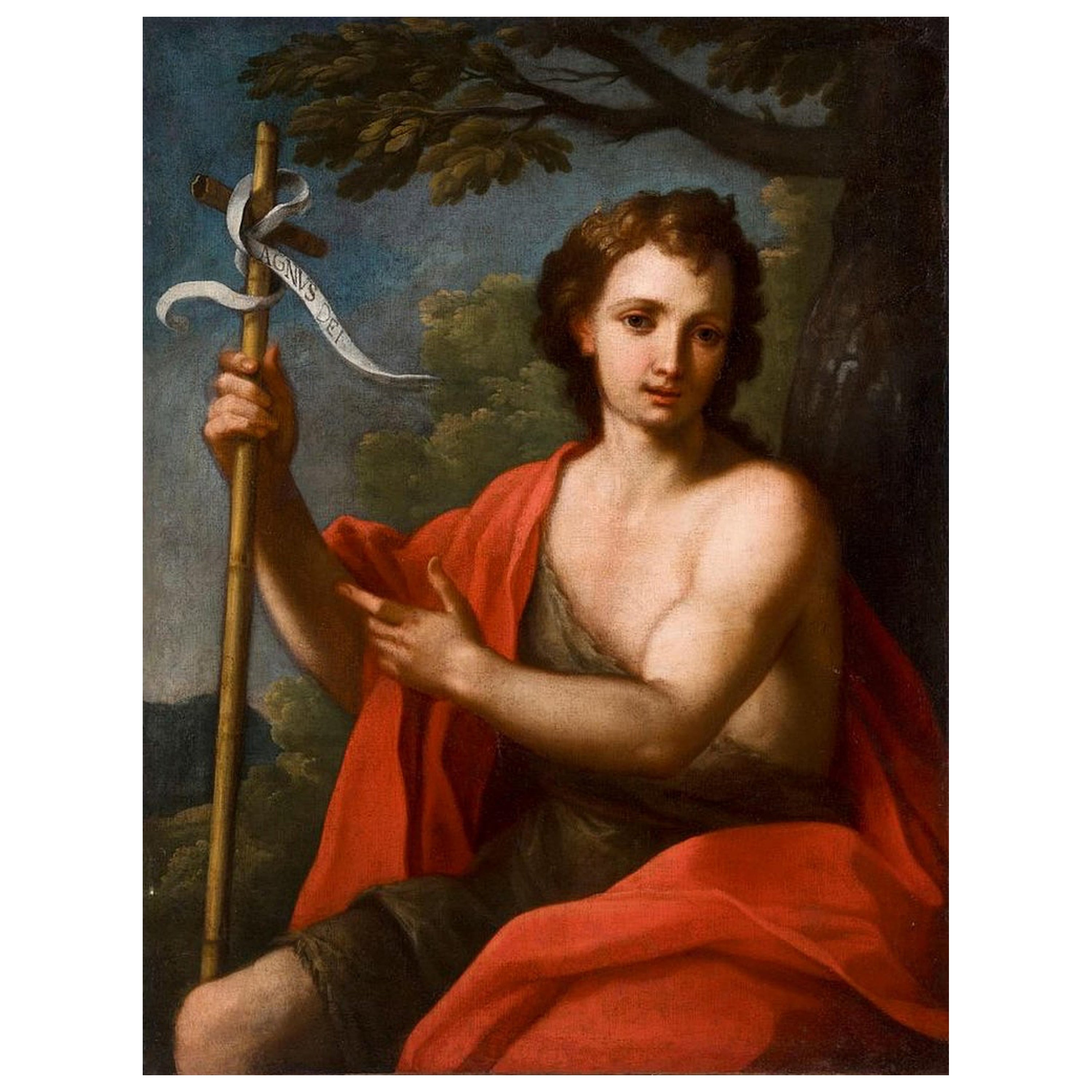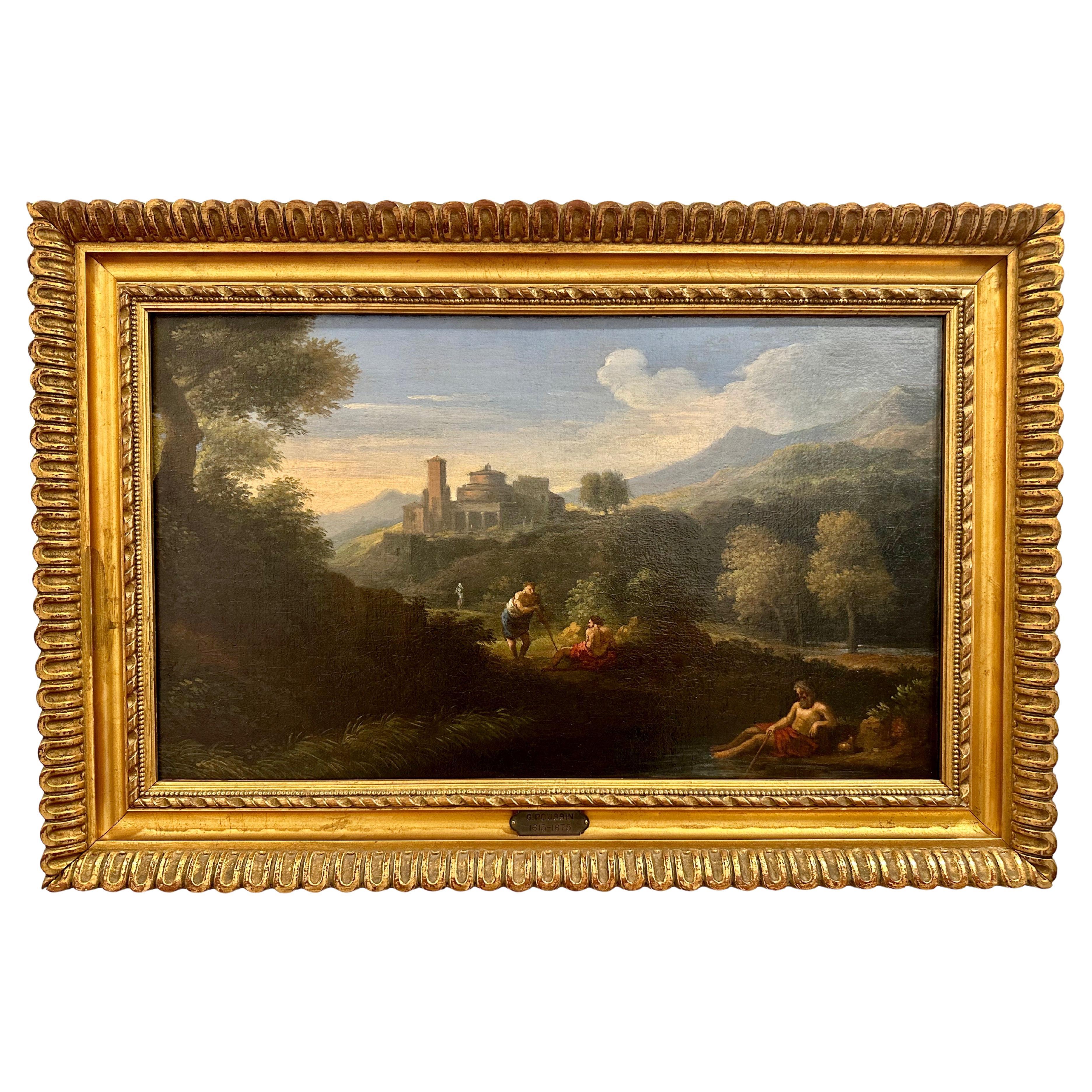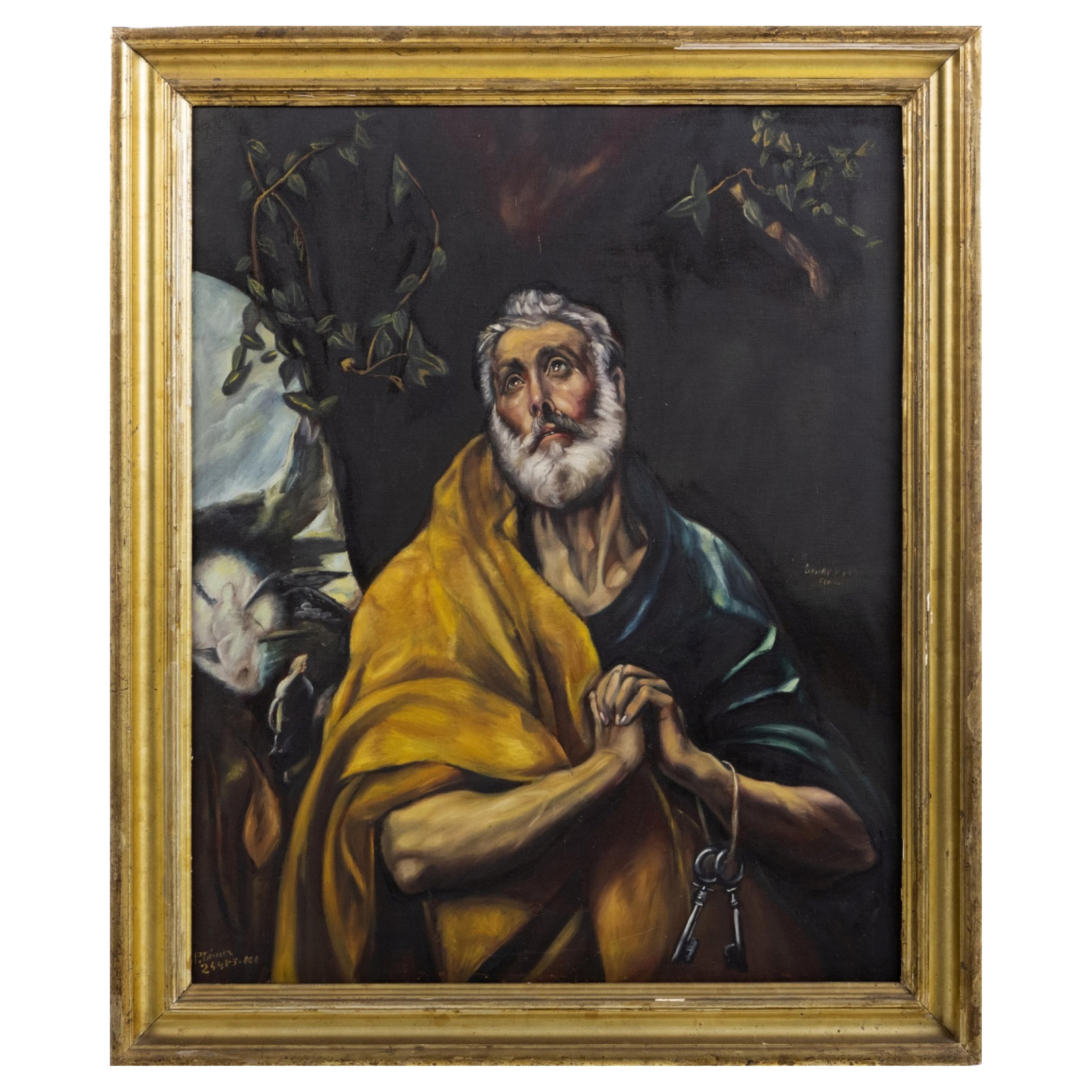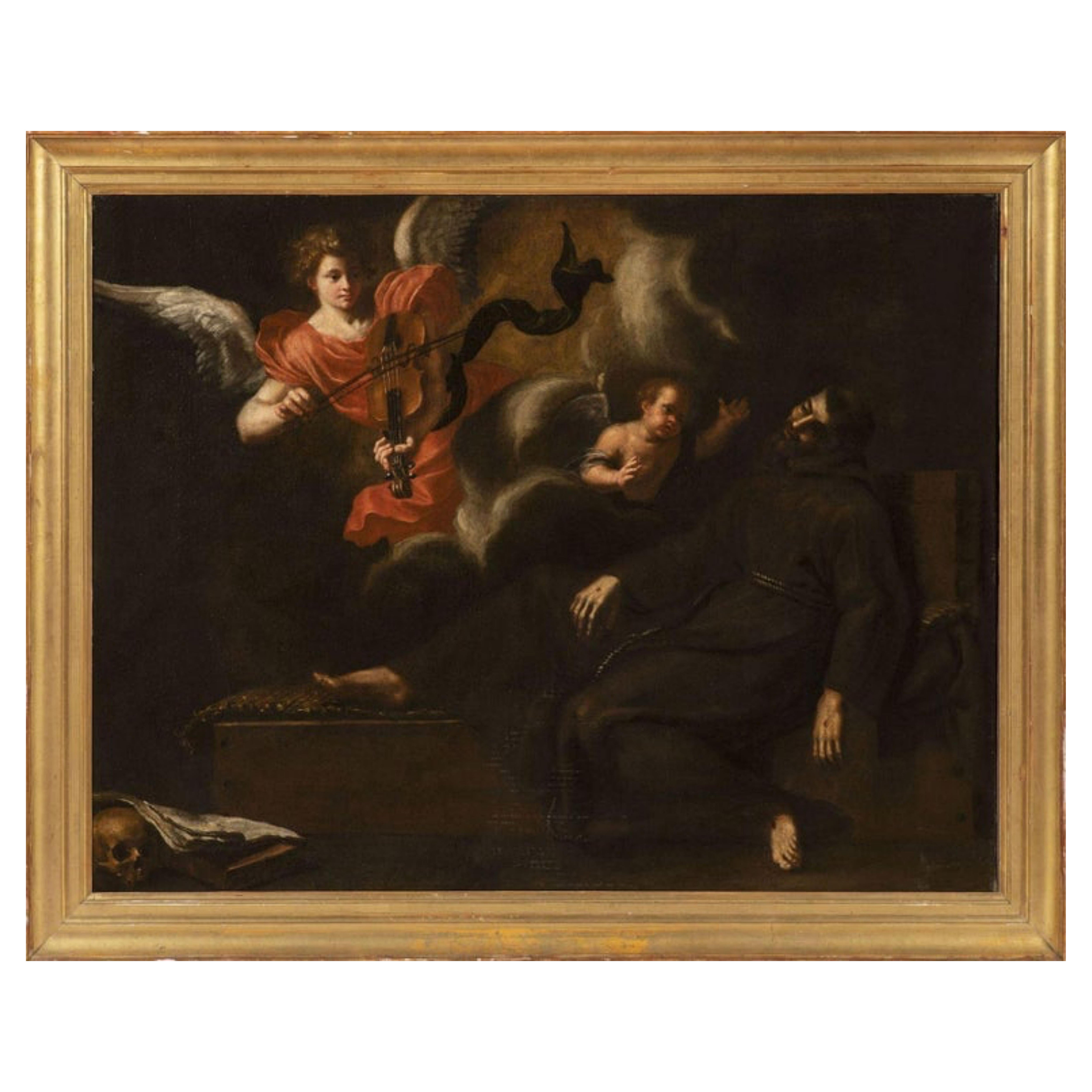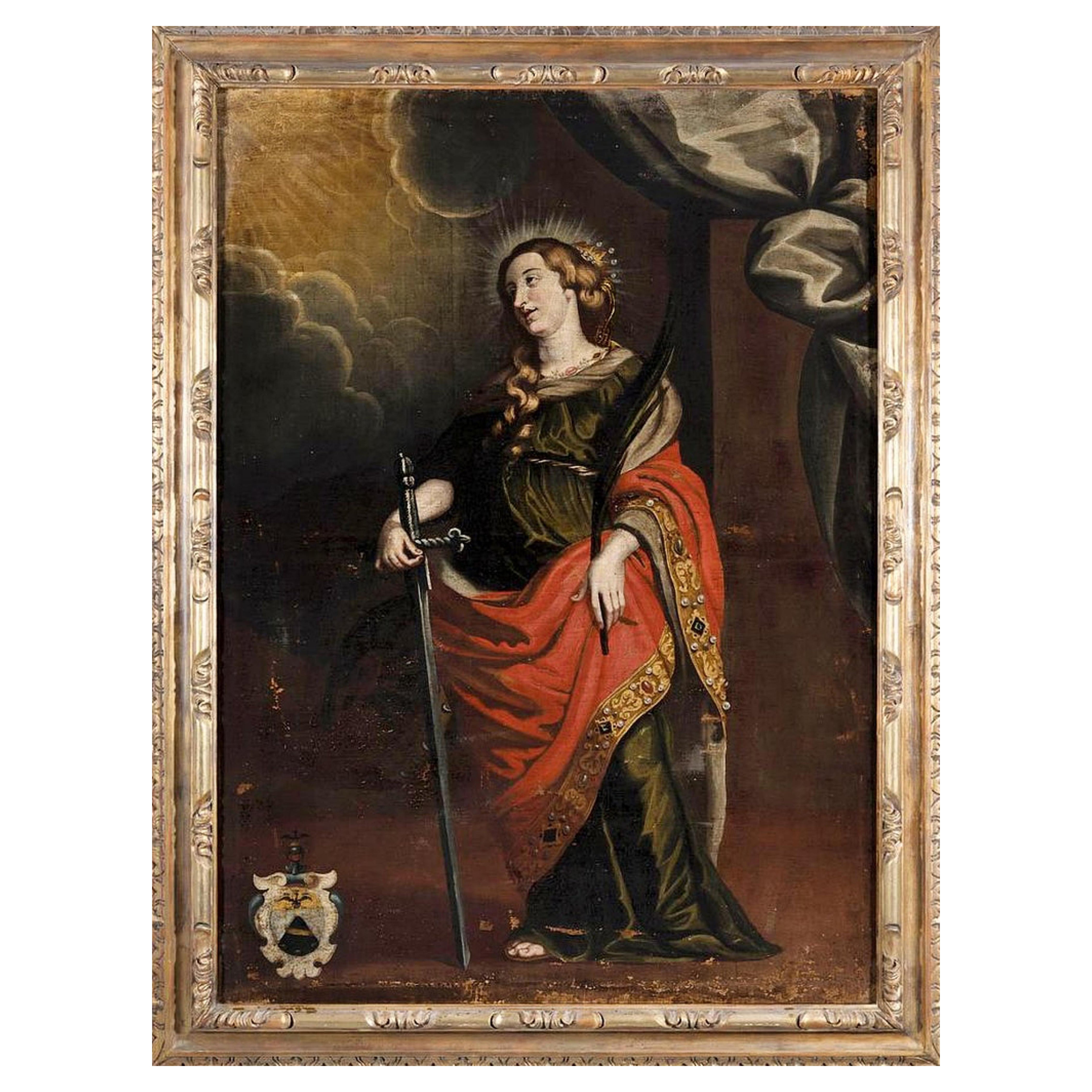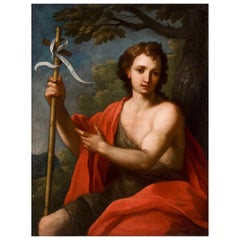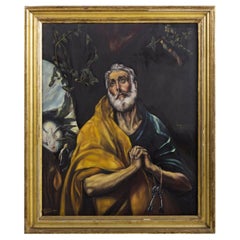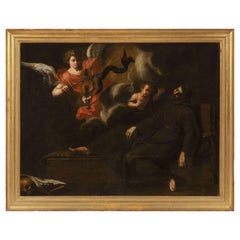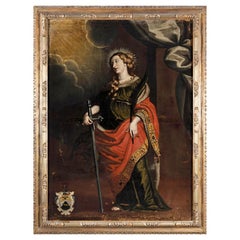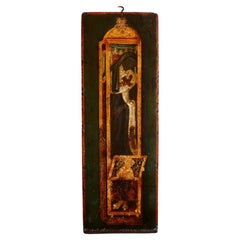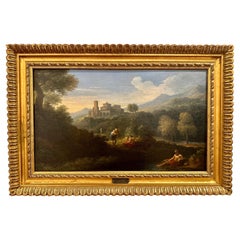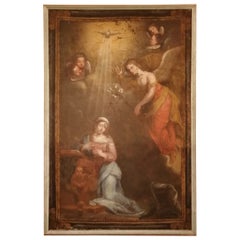Items Similar to AURELIANO MILANI attrib (Bologna 1675-Rome 1749) "The Repentance of Saint Peter"
Want more images or videos?
Request additional images or videos from the seller
1 of 7
AURELIANO MILANI attrib (Bologna 1675-Rome 1749) "The Repentance of Saint Peter"
About the Item
AURELIANO MILANI (attributed) (Bologna, 1675 - Rome, 1749)
"The Repentance of Saint Peter"
Oil on canvas,
75x58.5 cm without frame
85cm x 68.5cm with frame
Aureliano Milani (Bologna, 1675 - Rome, 1749), Italian painter active during the late Baroque period.
The painting is a refined product of 17th century Bolognese painting. The scene shows the repentance of Saint Peter, a theme that enjoyed great popularity during the Counter-Reformation. The Saint, presented from the waist up, has his hands together in an attitude of intimate conversation and looks up to heaven while tears wet his cheeks. A thick white beard frames the Saint's face, while his half-open mouth and disheveled curls make the image more lively. The light coming from the left illuminates the saint's face, which is also notable for the ochre tone of his cloak. The intensity of the saint's face and the powerful dosage of chiaroscuro reveal the work of a painter of great calibre, well acquainted with Guido Reni's essays on the subject. The theme of the Weeping Saint Peter was frequently tackled by artists of the Carracci school in the first two decades of the century. The intimate and pathetic tone of the work brings it close to the style of Aureliano Milani, a high-level Bolognese artist who, in the choice of warm colours and in the expressive force of the figures, renews the strength of the Carracci painting, especially that of Ludovico. Stylistically, the figure does not seem very far removed from those of St. Luke and St. Pellegrino in the Basilica dei Servi in Bologna, painted before his departure for Rome in 1719.
Although he began his training as a pupil of his uncle Giulio Cesare Milani and later Lorenzo Pasinelli and Cesare Gennari, his style as an artist moved away from that of these masters. He consciously tried to approach the Carracci way of doing things. He conscientiously studied the frescoes that Annibale and Agostino Carracci had executed in the Magnani and Fava palaces almost eighty years earlier. The patronage of Count Alessandro Fava allowed him full access to these works. He made copies of the most famous works of the Carracci, trying to emulate the vigorous male figures that the brothers had included in their great compositions. However, he was never a great colourist, and his contemporaries criticised him for this.
Milani eventually settled in Rome (1719), although he left his large family in Bologna. In the capital of the popes he obtained numerous commissions and established relationships with other artists such as Domenico Maria Muratori and Donato Creti. In Bologna he left numerous disciples, such as Antonio Gionima and Giuseppe Marchesi, il Sansone.
In the fresco decoration of the Galleria del Palazzo Doria Pamphili in Rome he left his own version of Carrara art, done with grace and ease.
- Dimensions:Height: 33.47 in (85 cm)Width: 26.97 in (68.5 cm)Depth: 3.15 in (8 cm)
- Style:Baroque (Of the Period)
- Materials and Techniques:Paint,Oiled
- Place of Origin:
- Period:Late 17th Century
- Date of Manufacture:17th Century
- Condition:Wear consistent with age and use. very good condition.
- Seller Location:Madrid, ES
- Reference Number:1stDibs: LU5779243336462
About the Seller
4.8
Platinum Seller
Premium sellers with a 4.7+ rating and 24-hour response times
Established in 2005
1stDibs seller since 2021
340 sales on 1stDibs
Typical response time: <1 hour
- ShippingRetrieving quote...Shipping from: Madrid, Spain
- Return Policy
Authenticity Guarantee
In the unlikely event there’s an issue with an item’s authenticity, contact us within 1 year for a full refund. DetailsMoney-Back Guarantee
If your item is not as described, is damaged in transit, or does not arrive, contact us within 7 days for a full refund. Details24-Hour Cancellation
You have a 24-hour grace period in which to reconsider your purchase, with no questions asked.Vetted Professional Sellers
Our world-class sellers must adhere to strict standards for service and quality, maintaining the integrity of our listings.Price-Match Guarantee
If you find that a seller listed the same item for a lower price elsewhere, we’ll match it.Trusted Global Delivery
Our best-in-class carrier network provides specialized shipping options worldwide, including custom delivery.More From This Seller
View AllPietro Bianchi (Rome 1694-1740) attributed Saint John the Baptist in the Desert
Located in Madrid, ES
Pietro Bianchi (Rome 1694 - 1740) attributed
Saint John the Baptist in the Desert
Oil on canvas
98 x 75 cm
The information on Bianchi's life comes to us thanks to two eighteenth-cen...
Category
Antique 18th Century German Baroque Paintings
Materials
Paint
"The Tears of Saint Peter" Follower Domenikos Theotokopoulos- El Greco 19th Cent
Located in Madrid, ES
"The Tears of Saint Peter", Follower Domenikos Theotokopoulos- El Greco 19th Century
El Greco Museum. Toledo, Castilla la Mancha, Spain.
Saint Peter's Tears
El Greco (1541-1614)
Oil...
Category
Antique 19th Century Spanish Baroque Paintings
Materials
Paint
$3,243 Sale Price
20% Off
Master of the Neapolitan School of the 17th Century. Vision of Saint Francis
Located in Madrid, ES
Master of the Neapolitan School of the 17th Century. Vision of Saint Francis
Description
The saint of the order, identified by his wounds, is depicted in a sleeping posture. Accord...
Category
Antique 17th Century Italian Baroque Paintings
Materials
Paint
Peter Paul Rubens Circle of "Saint Catherine " Never Restored First Canvas
By Peter Paul Rubens
Located in Madrid, ES
Peter Paul Rubens (Siegen 1577 - Antwerp 1640) circle of
Saint Catherine of Alexandria
Never Restored First Canvas
Oil on canvas
129.5 x 94 cm
The work is based on the painting by Peter Paul Rubens and engraved by Schelte von Bolswert.
Rubens, known as "the Prince of the Baroque", was the great master who revolutionized both Flemish and European painting. His first training took place thanks to the masters Otto van Veen and Jan Brueghel the Elder. His trip to Italy, where he stayed, studied and painted for eight years, was fundamental to his artistic growth. His first stop was Venice, where Titian, Veronese and Tintoretto studied. He later came into contact with Vincenzo I Gonzaga, Duke of Mantua, becoming the court painter of the family, a position he held until the end of his stay in Italy. In Mantua, Rubens had the opportunity to study the rich ducal collection closely and assiduously. By making copies of several famous paintings he was able to practice technically on the examples of the greatest masters. In 1601 he was sent by the duke to Rome, where he was able to further broaden his figurative horizons thanks to the copying of the models of Michelangelo and Raphael and the study of the ancient, also looking at the contemporary artistic production of Carracci, Caravaggio and Federico Barocci. After leaving Italy, he settled in Antwerp, where he organized his atelier, applying the methods of organized production, that is, employing his collaborators with rational criteria and on the basis of individual specializations. Among the many painters who came out of Rubens' workshop or were strongly influenced by the master, we remember: Cornelis and Paul de Vos, Jacob Jordaens, Pieter Van Mol, Victor Wolvoet, Joanna Vergouwen, Jan Boeckhorst known as Lange Jan, Lucas Van Uden, Theodor Van Thulden, Peter Van Lint, Willem Van Harp, Vincent Adrianssen, Pieter Van Avont, Jan and Hendrick van Balen, Theodor Boeyemans or Boeijermans, Vincent Malò...
Category
Antique 17th Century German Baroque Paintings
Materials
Paint
Venetian School of the 18th century "Saint John"
Located in Madrid, ES
Venetian School of the 18th century.
"Saint John"
oil painting on canvas
47cm x 37cm without frame
60cm x 50cm with frame
good conditions
Category
Antique Early 18th Century Italian Baroque Paintings
Materials
Paint
Italian School of the 17th Cent."Salome with the Head of Saint John the Baptist"
Located in Madrid, ES
Italian School of the Sec. XVII
"SALOME WITH THE HEAD OF SAINT JOHN THE BAPTIST"
Oil on copper.
Dim.: 22 x 15 cm
good conditions.
Category
Antique 17th Century Italian Baroque Paintings
Materials
Paint
You May Also Like
Bolognese School of the 16th Century - Mummy of Saint Catherine of Bologna
Located in Bruxelles, BE
Bolognese School of the 16th Century
Mummy of Saint Catherine of Bologna
Oil on Panel
20,5 x 7 x 0,8 cm
This rare painting depicts Saint Catherine of Bologna as a mummy, housed in a ...
Category
Antique 16th Century Italian Renaissance Paintings
Materials
Wood, Giltwood
Jan Frans van Bloemen called Orizzonte (Antwerp 1662-Rome 1749), Roman Landscape
Located in CH
Jan Frans van Bloemen called Orizzonte (Antwerp 1662-Rome 1749).
A Late 17th early 18th century Italian landscape with figures of the Roman Campagna.
...
Category
Antique Late 17th Century Dutch Baroque Paintings
Materials
Canvas
Peter Lastman, attrib. Mystery Old Master Painting, Dutch School
Located in Kingston, NY
Peter Lastman inscribed on reverse Old Master painting, probably Dutch school, late 17th century. Oil on curved canvas depicting the entrance of King David on Horseback. No apparent ...
Category
Antique 17th Century French Paintings
Materials
Canvas
Antique Painting "the Annunciation" Italian, Bologna, 17th Century
Located in Cesena, FC
Oil tempera on canvas "The Annunciation"
Period: 17th century
This beautiful canvas fits into the pure Emilia-Bolognese iconographic tradition of the seventeenth century, captiva...
Category
Antique Mid-17th Century Italian Paintings
Materials
Canvas
Emperor Nero Plays the Lyre While Rome Burns by F. Ugeri. Rome, circa 1810
Located in Budapest, HU
Great and superb oil on canvas period Empire. Measures: 120cm x 160cm!
Category
Antique Early 19th Century Italian Paintings
Materials
Canvas
Large Oil on Canvas the Descent from the Cross in the Style of Peter Paul Rubens
By Peter Paul Rubens
Located in Markington, GB
Oil on canvas ''the Descent from the Cross'' or "La Descente de la Croix" in the style of Peter Paul Rubens
the Descent from the Cross has been called a Baroque masterpiece — perhaps due to its monumentality — but it is also considered to be the first work of Rubens' “Classicist” period, which characterized his style from about 1612 to 1620.
Highly sought after original copy of the masterpiece that Rubens painted, it shows it's age well, some repairs but when it hangs on the wall it is an impressive antique canvas...
Category
Antique Late 18th Century British Baroque Paintings
Materials
Canvas, Wood
